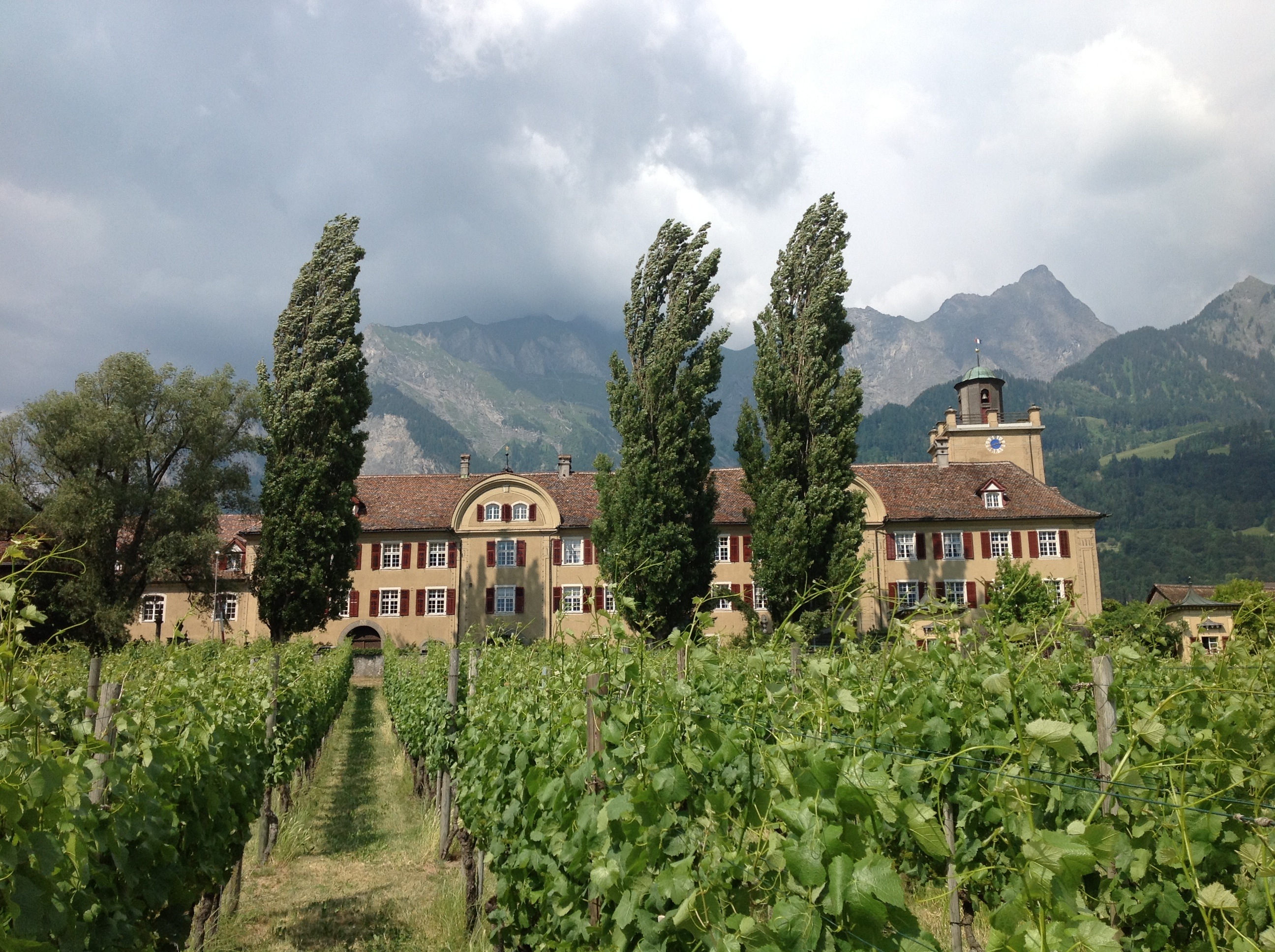
By Patrick Hunt
How many wines can compete with the renown of Burgundy for Pinot Noir?  To many, Maienfeld in the Canton of Graubunden in Switzerland is famous as the setting for Johanna Spyri’s 1880 novel of Heidi, so this lovely and picturesque part of the Rhine Valley has even been named Heidiland by locals for almost a century. Great gourmet restaurants like Schloss Brandis in the middle of the town of Maienfeld in the old medieval Brandis Castle, a deserving member of the esteemed Chaîne des Rôtisseurs, showcase the elegance already established by the Bad Ragaz resort of Grand Hotel Quellenhof and Spa.

But to wine connoisseurs around the world, it is the marvelous wine of Bündner Herrschaft that makes Maienfeld an even more special place. The primary wine of Maienfeld is a Pinot Noir often mistaken for the prestigious wine of Chambolle-Musigny in the Côte d’Or. Although viticulture in the region often names the varietal as Pinot Noir, the German name for Pinot Noir is Blauburgunder and one can find both words on labels. Appropriately, Maienfeld’s civic heraldry is even a grape cluster in a blason of blue and yellow.
Out of many exceptional wineries of this Swiss Graubunden Canton’s vineyards in south-facing sunny slopes between villages, the oldest weingut (winery) of the region is Schloss Salenegg, a Baroque castle on the Maienfeld estate that was founded by the von Salis Family in 1330 and owned since 1658 by the von Gugelberg Family. The heart of this monastic estate was originally planted by Benedictine monks from nearby Pfafers in the 10th century in the choicest parcel of the valley. The first record of viticulture here is in 950 and the Pfafers monks are also also mentioned with this same wine estate in Maienfeld archives in 1068. This makes Schloss Salenegg one of the first viticultural plantings in Switzerland and quite possibly the oldest continuing winery, antedating the Old Swiss Confederacy of 1307.
Of course, the castle with its cermaic-tiled roof is illustrious in its own right. Its setting just north of the current village is surrounded by its vineyards; its creamy taupe walls surmounted by a tower with a bronze roof and framed by mature trees. Schloss Salenegg remains the residence of the von Gugelberg Family.
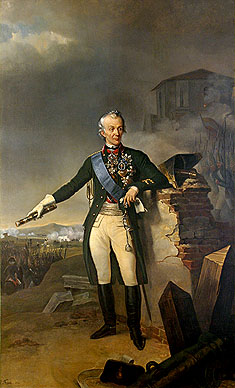
During his military campaigns against the spread of quasi-French revolutionary activity in Italy, Field Marshal Alexander Suvorov (1730-1800), the Russian military genius who had crossed the intrepid Austrian Alps with winter armies, stayed here in November of 1799 and possibly saved the castle from pillaging during a local rebellion when similar anti-aristocratic marauding elements sought to damage large landholders’ houses even when families like the von Gugelbergs were generous and extremely charitable.
Plus, the poet Rainer Maria Rilke (1875-1926) wrote a poem that mentioned the rejuvenated ancient willow tree in the castle courtyard that was featured on the old Von Salis heraldry, a trope for his own hope of an extended life when he was very ill. An article photo shows this same  willow tree that Rilke made famous; he stayed here in 1926 a few months before his death. The willow was apparently moribund but almost miraculously revived while Rilke was here, sadly outliving the poet but not his poem. The author wrote a historical fabula, “The Wine of Rilke” in his recent book, A Few Hundred Thoughts published at the end of 2013 that fictionalizes some of the known elements of Schloss Salenegg and its Rilke connections. The poet must have consumed some of this wine as well when he was here, a likely inspiration for his poem celebrating the willow tree that still flourishes on the west side of the castle courtyard.
This Schloss Salenegg wine is a traditional Blauburgunder, grown and harvested under very strict regulations for the highest quality with a concentrated relatively low yield on its slopes. The Schloss Salenegg vines produce distinctly red berries, not dark, which are fruity and ripen in a range of barrel sizes (called fuder) whose volume is from 1900-4500Â litres. The aging barrels are made of Slovenian oak because this oak contains less tannin than other oaks. Before being filled, the barrels are washed with salt water for a week until the dark salt brine is washed out, then fresh water washes out the salt. The author has included a photo of owner Helene von Gugelberg with a Schloss Salenegg fuder.
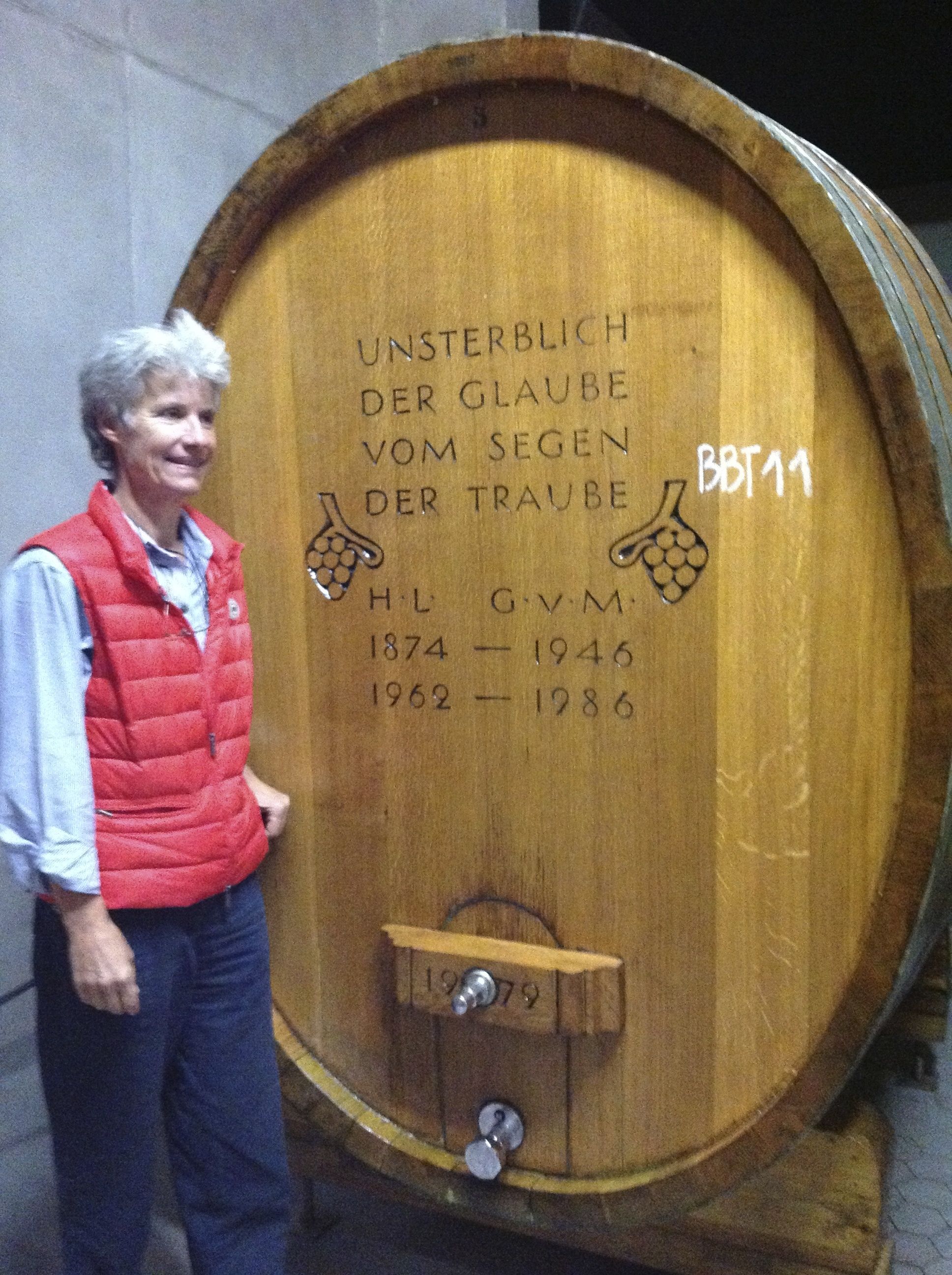


Local Graubunden cantonal rules for Bündner Herrschaft only allow 700-750 gms per square meter of fertilizer, but here the south-facing soil of the slopes is from montane alluvium and the winery maintains the soil chemistry in a carefully balanced program, therefore the vines don’t need any added fertilizer. According to Helene von Gugelberg during an interview, “the desired harmony between tannins, alcohol and fruit should be like a marriage, and that is the goal for Schloss Salenegg wines”. Schloss Salenegg also makes chardonnay and verjus (the new juice of unripe grapes with its low acidity, used in sauces and condiments since at least the Middle Ages, see photo) in various flavors including vanilla and apple, as well as an excellent marc, a type of brandy from the grape skins, the equivalent of Italian grappa.

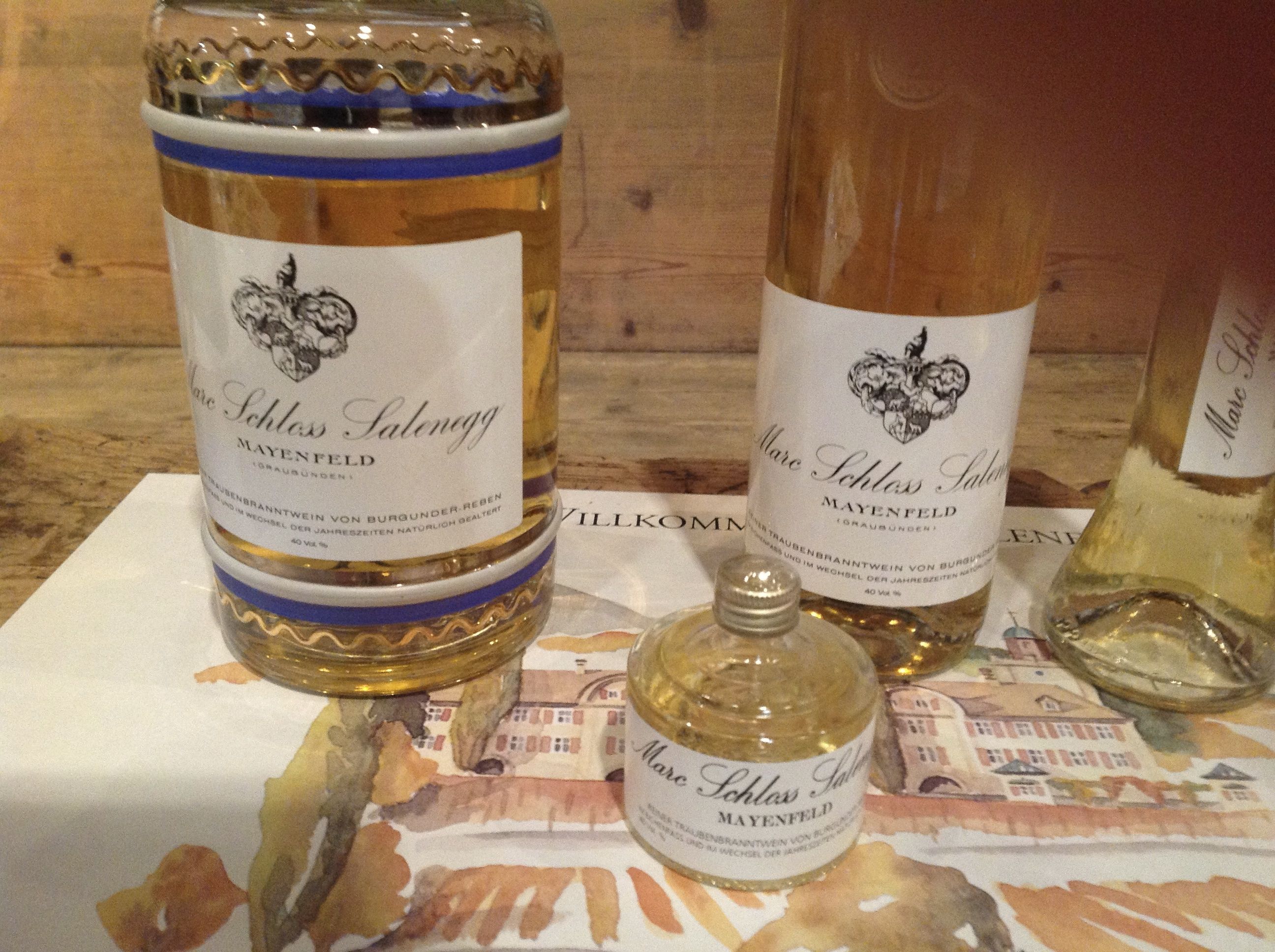
Maienfeld and neighboring villages have been on the wine map since Daniel Gantenbein and his brother made Bündner Herrschaft wine familiar to Swiss marketing a few decades ago although Schloss Salenegg wines have been the flagship for Bündner Herrschaft for generations. After the original monastic plantings,  the Von Salis family bought the wine property in 1330 and renamed it from Prestenegg to Salenegg. Because the Salis Family also planted the willow (Salix) tree here as a pun on the von Salis name, this explains the current castle name as “Saleneggâ€.
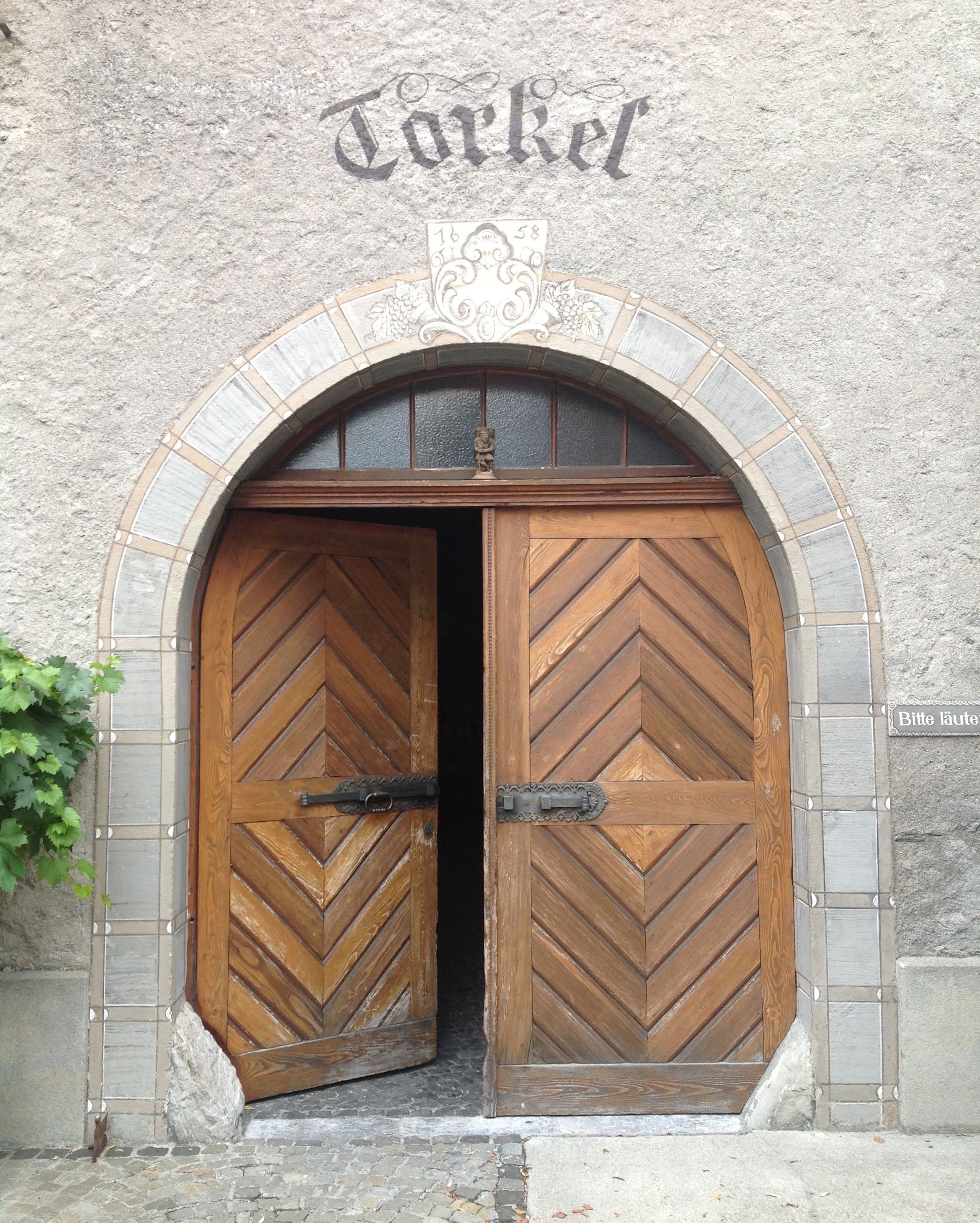
Helene von Gugelberg’s grandfather designed the current distinctive wine label shown in several photos here. Although known locally, almost nothing gets exported and much of the Schloss Salenegg production stays local, with a significant portion consigned to the Grand Hotel Quellenhof Resort and Spa in Bad Ragaz. I purchased a 2011 Pinot Noir bottle at the winery in 2013 for an understated 25 swiss francs and just recently enjoyed another 2011 superb bottle at the recently renovated 16th c. Schlossli, the excellent vinothek, hotel and restaurant establishment of Tiene and Katja Theun in the Swiss village of Sax, proprietors who know the real value of this vine (from the Schlossli seen in the photo below). Note the wine legs on the glass of this noteworthy 2011 Pinot Noir.
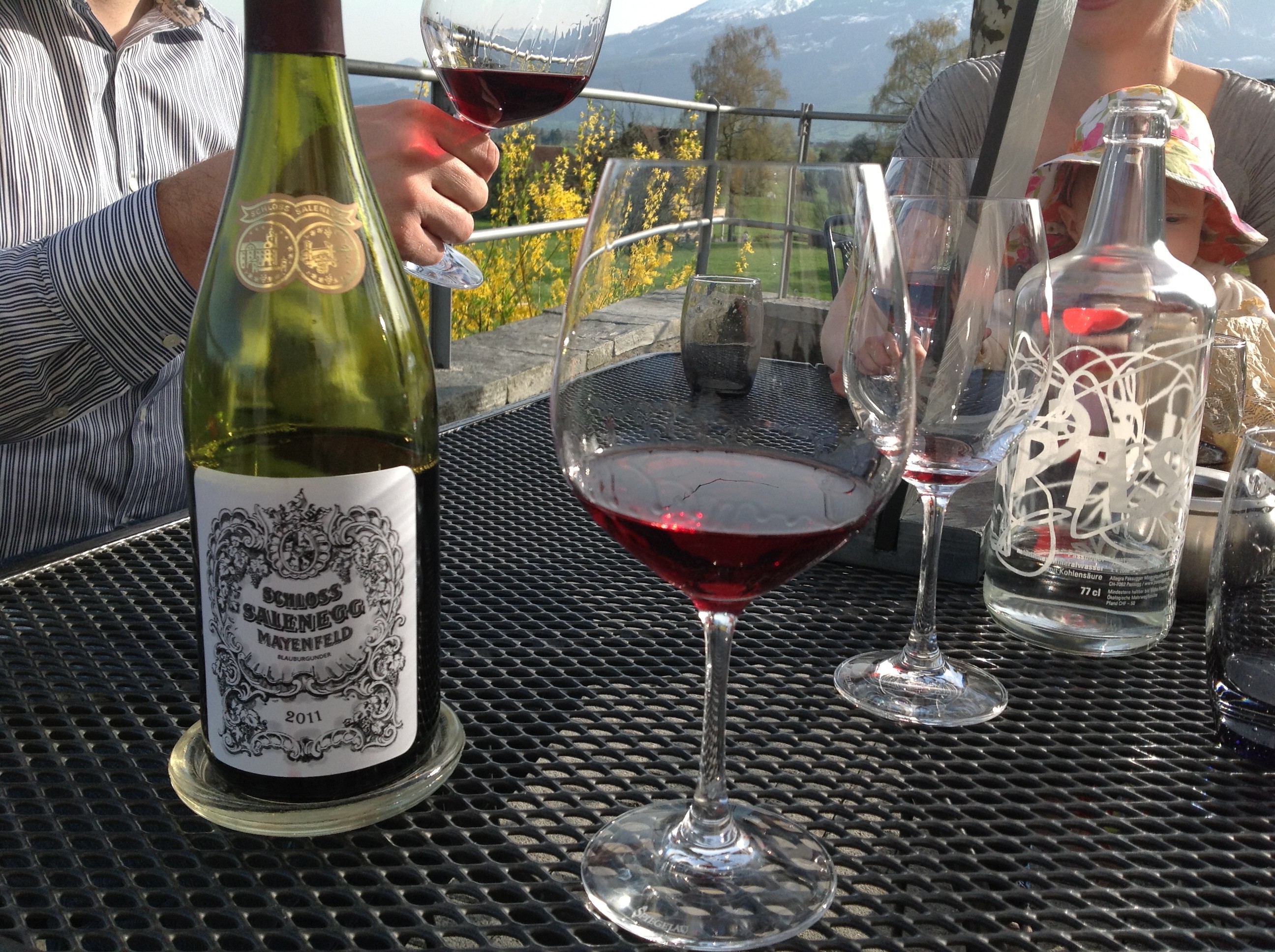
This exceptional wine deserves a broader distribution but the canny Swiss know its quality and will probably continue to consume the majority of it fairly close to home. The author has tried for several years to acquire even one bottle of Schloss Salenegg wine in the US, but it is almost impossible to find it outside Switzerland, which is a pity as it is a proud ambassador of Maienfeld, the region of Bündner Herrschaft and the wine of Switzerland overall.
* * * * * * * * * * * * * * * * * *
Note: Here is the website for the winery (http://www.schloss-salenegg.ch). Â I also mentioned this winery in a book Wine Journeys: Myth and History (Cognella Academic Publishing, 2013).